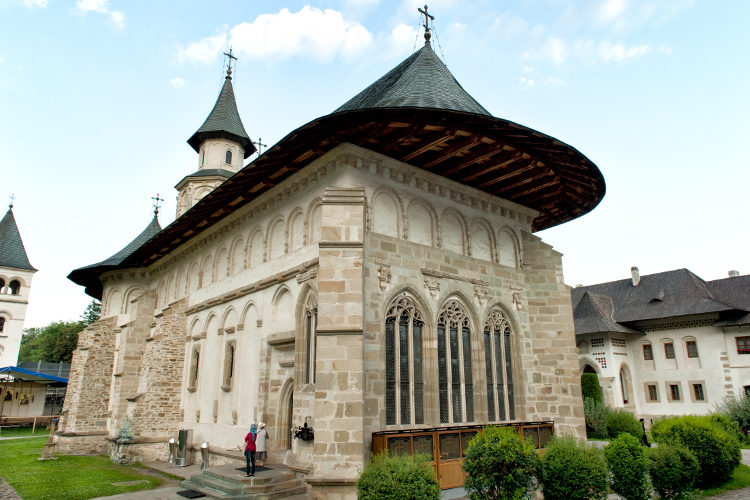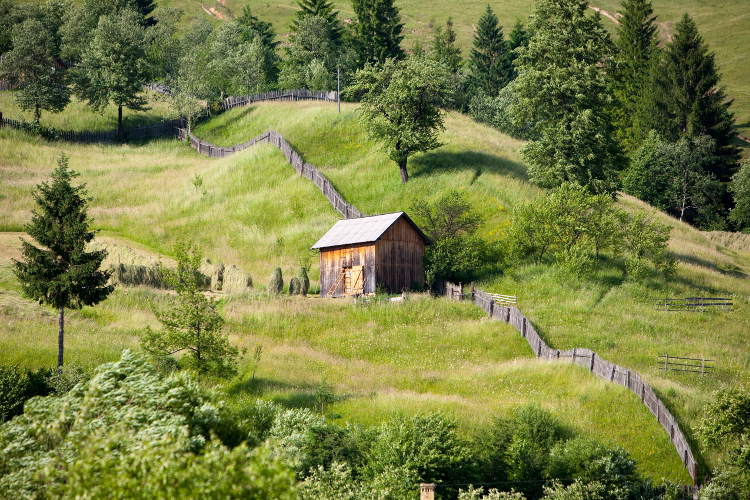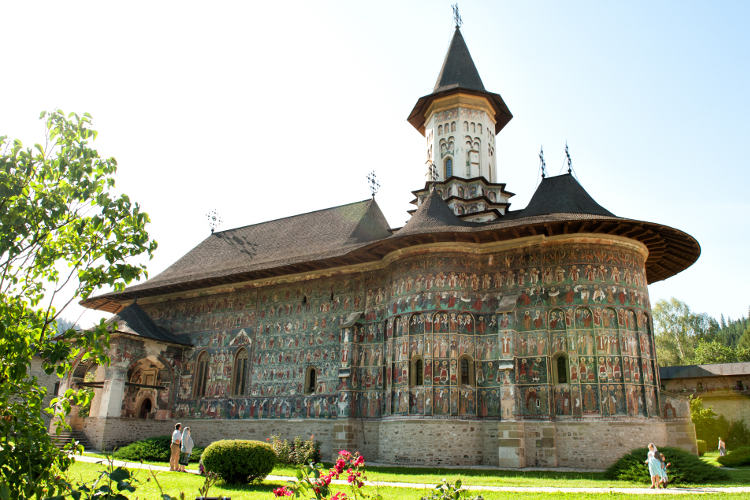This diversion was always a popular day trip, long before the royal visit. It harmoniously incorporates all the elements that make this area of Romania a memorably eclectic detour out of well-worn Transylvania: a pair of important monasteries, an intimate look at village life, immersion into the postcard-calibre, bucolic Moldavian countryside and a mildly strenuous walk through the woods.
Prince Charles walked from Suceviţa to Putna, but those relying on public transport to get to and from the trailheads would probably do better to reverse that and start at Putna. It’s accessible via an infrequent, crawling yet scenic, two-and-a-half-hour train ride from Suceava, the nearest large city and prime staging area for visiting the region’s famous monasteries.

After shaking off the anesthetising effects of the train ride, head straight to Putna Monastery. Built between 1466 and 1481, Putna doesn’t receive many foreign tourists since it doesn’t boast the trippy, fear-of-God exterior frescoes found on other famous monasteries in the region. Instead, it attracts mostly Romanian visitors, as it’s the final resting place of Ştefan cel Mare (Stephen the Great; 1433–1504) who is still considered a national hero by Romanians.
During his reign as Prince of Moldavia, when Ştefan wasn’t handily repulsing forces from Poland and Hungary, he faced overwhelming odds while resisting the advance of the Ottoman Empire. This feat made him venerated throughout Europe. Pope Sixtus IV bestowed Ştefan with the Atheta Christi (Champion of Christ) award and he was canonised by the Romanian Orthodox Church. He is also credited with founding many of the monasteries in the area that are still standing today, including Putna. Look for his name, prominently landscaped into the hillside just south of the village. The monastery’s museum holds several treasures, including the Holy Book which Ştefan carried when he went to battle.

The trail’s blue-cross markings, some of them quite faded, don’t actually begin until almost 2km outside the village. When departing Putna, take the first right onto an unpaved road after exiting the monastery’s gate and follow the ‘S’ curve around the edge of the village. The road crosses a small stream and continues parallel to the stream for some time before the first blue cross appears on the side barrier of a small cement bridge.
The road meanders past farmhouses, skittish livestock and intriguing snapshots of rural Romanian life, then abruptly veers left and plentiful blue crosses lead up a steep hill and deep into the forest. The going eventually gets far less steep, but the uphill rise continues for several kilometres through the quiet, unspoiled forest before a mild downhill walk begins. Though markings are thin at times, the trail is fairly easy to follow until it joins with a logging road. This unpaved, intermittently muddy road eventually exits the forest, turns into a paved road (where the blue trail markings disappear alltogether) and scattered homes become plentiful before the road terminates at the front door of Suceviţa Monastery. The hike should take roughly five hours.

Suceviţa Monastery, built between 1582 and 1601, is the largest and perhaps all-around finest of the famous painted monasteries of Southern Bucovina. The exterior of the church inside the fortified enclosure is almost completely covered with predominantly red and green frescoes (dating from around 1590), except the western wall which, legend has it, went unfinished after the artist died from a scaffolding fall. Other highly superstitious artists were too frightened to continue his work.
From here you can either hitchhike (a very common practice in the Romanian countryside) or flag down a passing minibus headed north toward Rădăuţi, from where hourly buses depart to take you back to your starting point of Suceava.